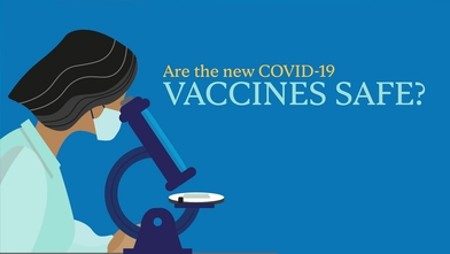As the Biden administration rolled out its massive increase in vaccine availability, and distribution, it appeared that the U.S. was on its way to reaching herd immunity by the end of 2021. But in recent weeks it has become apparent that vaccine resistance is impeding health professionals from coming close to the desired goal. And, in fact, the resistance is making it possible for new variants to take hold and drive the number of cases and deaths up.
This week the U.S. officially surpassed 600,000 deaths and 33.5 million cases to date. Taking into consideration underreporting from the earliest days of the pandemic, the numbers may be as much as 65% higher. That would put the number of U.S. deaths at nearly a million.
If I were to tell someone that there was a means to reduce his or her odds of contracting a disease responsible for nearly a million deaths in the U.S. in less than 18 months, wouldn’t you think that he or she would jump at participating in the solution? The majority of Americans have jumped aboard. But a significant number have not.
Why not? In some cases, the decision not to get vaccinated is coming from those who provide leadership within specific groups. These leaders can be religious, political, business or social. In some cases, the pressure is coming from family and peers. In other cases, it is social media sources that people choose to read that reinforce fears about vaccination. And there is the old fear of getting a needle.
So what are the leaders, influencers and vaccine naysayers spouting? Nothing with any scientific basis. Here are the top 5.
- Getting a COVID-19 vaccine causes your body to become magnetized. The idea is ingredients in the vaccine produce electromagnetic fields. Stick a fork in this one because no ingredients in COVID-19 vaccines contain electrodes, microelectronics, nanowires, nanotubes, computer chips or semiconductors. So vaccination won’t make you stick to the fridge or any nearby Link fence.
- Getting a COVID-19 vaccine makes you shed viral particles contained in the shot. This notion comes from a belief that vaccines contain live viruses, or if not live, viral proteins that can infect a healthy unvaccinated person. None of the vaccines developed use live viruses and nothing put into you when you get the shot is shed other than a tear or two of relief. True story, when I got the first vaccine I burst into tears. Too many months of worry after getting COVID-19, suffering three bouts of cancer from my immune system going nuts, and then myocarditis when the virus attacked my heart, drove me to cry.
- Getting a COVID-19 vaccine alters my DNA. This was a discussion I had with a male nurse after having a heart procedure to reverse the damage COVID-19 had done to me. I explained to him that the only thing an mRNA vaccine has in common with our DNA is the letters NA appear in both. The vaccines provide a stimulus to the cells to manufacture the antibodies and stimulate the T-cells to recognize viral particles and remove them. Our DNA remains unaffected and unaltered.
- Getting a COVID-19 vaccine will make me test positive or contract the disease. This idea comes from a belief that vaccines contain live viruses. But none have been developed using live viruses. If after the vaccine a person tests positive for COVID-19, it probably indicates that they were positive before the vaccine was administered. And if an antibody test shows you developed some level of protection from the virus, it means you were previously infected.
- Being near someone who gets a COVID-19 vaccine can change a woman’s menstrual cycle. How this is conceivable is beyond any known science associated with vaccinations whether COVID-19 or not. Maybe if being near someone who has been vaccinated produces stress, causes changes to routines, leads to insomnia, or makes you change your diet, then any of those actions could affect a woman’s cycle. But being beside a vaccinated person doesn’t have an extracorporeal influence.
A recent article on vaccine hesitancy posted on the John Hopkins Medicine website tries to deal with the angst describing 12 things you need to know about the virus and the vaccines. Here is my take on the 12.
- Getting the vaccine stops a person from likely experiencing severe reactions or sickness from COVID-19. Being fully vaccinated, even if exposed to one of the variants, will probably avoid hospitalizations.
- Socially disadvantaged people (the poor, and U.S. communities of colour) are at higher risk often because of the work they do, and the conditions in which they live. (In Canada, First Nations, Metis, and Inuit communities with overcrowded living conditions are at greater risk than the general population).
- Getting the vaccine means those around you are less likely to get sick. This is how herd immunity is supposed to work.
- Getting the vaccine sooner than later means a return to normal life sooner than later. Again, this is the herd immunity end result.
- The vaccines currently available, and those in advanced clinical trials, are being rigorously studied, and have been produced without cutting corners even though they have been rolled out in record time. Why so fast? Because within a few weeks of COVID-19’s first appearance we had mapped its genome and identified the protein spikes to target for vaccine development. We couldn’t have done this with the state of science and technology 20 years ago.
- The vaccines have been and are continuously being tested and assessed with a diverse population (even members of the U.S. Republican Party) including people with known prior medical conditions, and pregnant women.
- Side effects from the vaccines are temporary with only rare occurrences of complications that can be managed by the health community if a vaccinated person keeps track of what his or her body is telling them. When I had the second dose of the Pfizer vaccine on the weekend, I reacted the second day. I was exhausted, achy, had heart palpitations, and hot flashes. I slept most of the day and when I woke up the next morning I felt fine. I have spoken to people who have run a fever for one or more days after the second vaccine, and people who have had adverse reactions after the first vaccine. The key here is to know when you are experiencing a reaction that requires a visit to your doctor or the hospital ER.
- Allergies to vaccines are rare but do happen because of ingredients used in the formulation. In such cases a person should not be vaccinated, but rather practice frequent handwashing, wearing a mask when in crowded conditions indoors. Before being vaccinated you should disclose any existing allergies. I am allergic to mangoes. No mangoes were used in either of the two vaccine doses I received.
- Vaccines do not harm a woman’s ability to become pregnant, nor are they dangerous to breastfeeding mothers or their babies. The vaccine’s purpose is to switch on the body’s own defence mechanisms to build up adequate antibody and T-cell protection against exposure to the live virus. It is no different than getting the flu vaccine, or any other vaccine that helps build the body’s capacity to fight off infections.
- If you have had COVID-19, you should still be vaccinated. Antibodies from an infection do not necessarily remain active indefinitely. Some studies have shown antibody levels after an infection begin to decline after six months.
- New variants of the virus will continue to appear and spread within the community of unvaccinated people, which could turn them into an unfortunate statistic or threaten the remaining population of unvaccinated. Viruses mutate and so far, COVID-19 has done it 50 times and counting. In Part 2 of this three-part COVID-19 vaccine series, I describe many of those variants and the efficacy of vaccinations in protecting us from getting infected.
- Vaccines save lives and shorten the pandemic best when the entire community is vaccinated. The term herd immunity is one that became part of our COVID-19 conversations early in the onset of the pandemic. According to the WHO, you need 95% vaccinated for herd immunity with measles and 80% with polio. We don’t know what percentage of the population we need to achieve herd immunity with COVID-19.
















